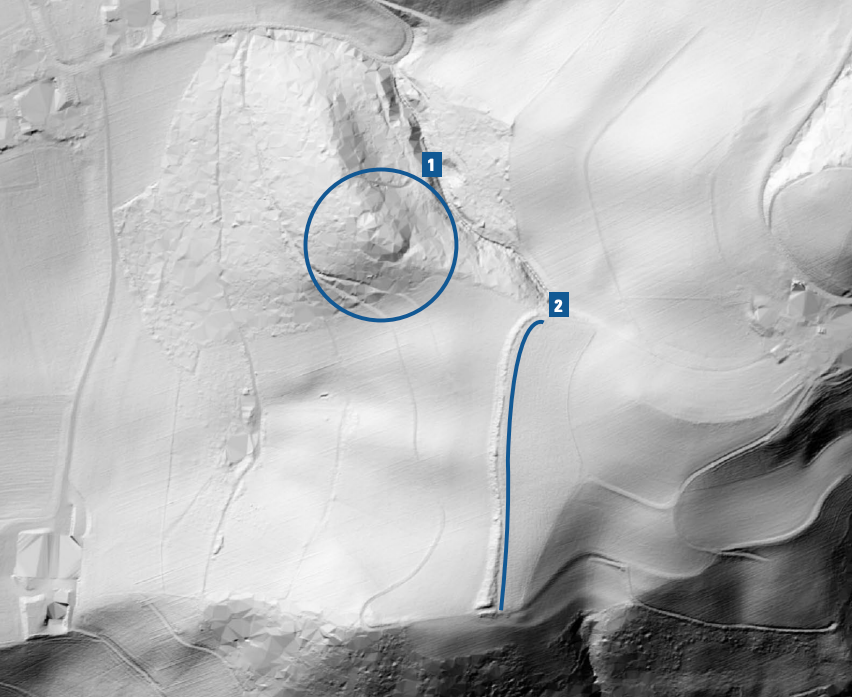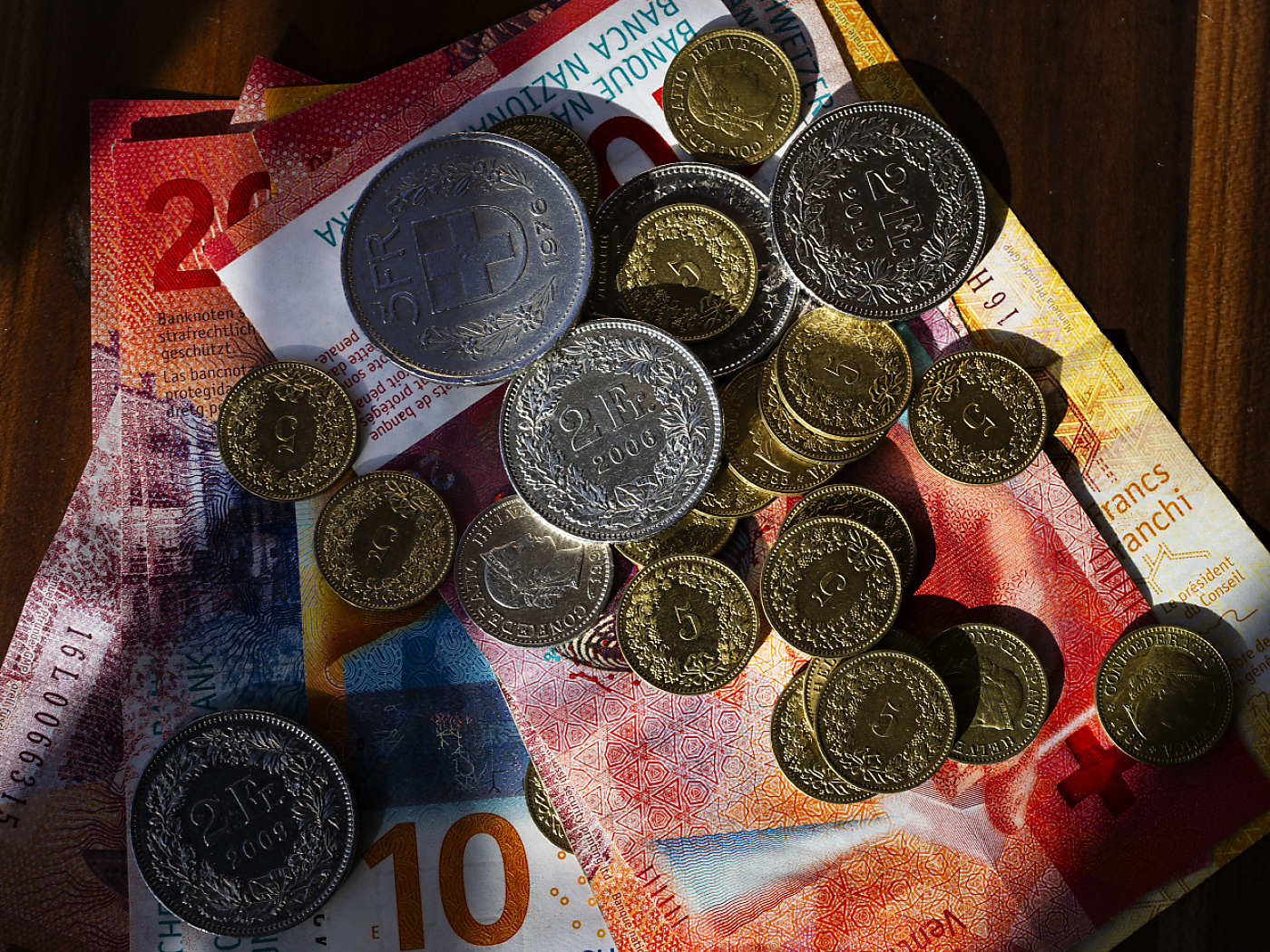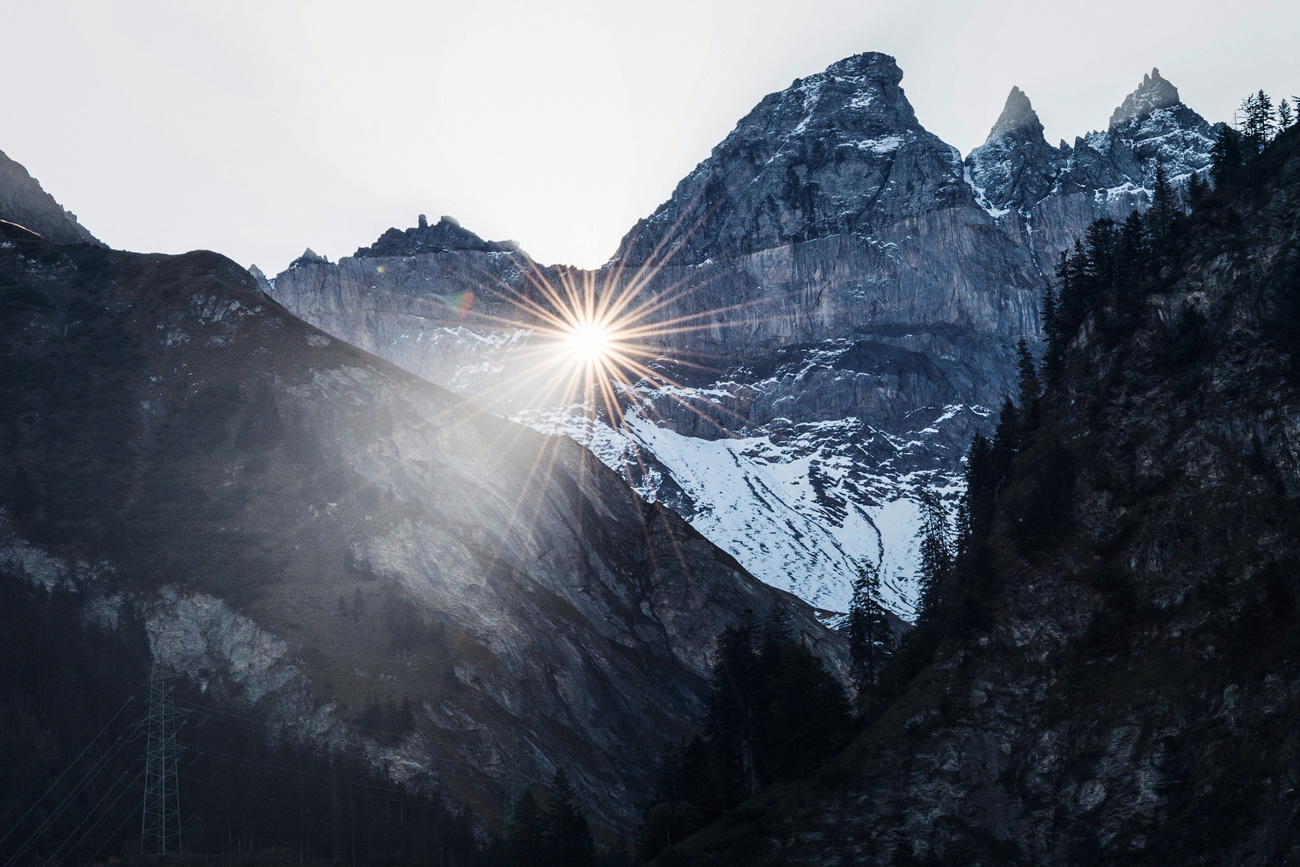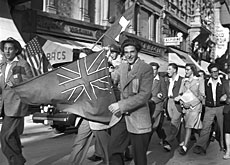Swiss army targets tourists

As the Swiss army continues to undergo sweeping reforms, more and more of its rich past is going on public display.
swissinfo’s journey begins at the Swiss Army Museum Collection in Thun and moves on to a sleepy alpine village, home to a former top-secret bunker.
Several halls are needed to house the vast collection of colourful uniforms, old helmets and marching-band tubas, Centurion battle tanks and worn out boots. There are even a few of the very first Swiss Army knives on display.
When I ask my guide, retired colonel Henri Habegger, to confirm whether there are 100,000 objects in the collection, he puffs out his chest and says “many more”. (listen to audio)
Habegger should know. He is the man who decides what is worth keeping in the Swiss Army Museum Collection in Thun, and what is to be discarded or sold through army-surplus shops.
It is a monumental task since the Swiss army has been decommissioning material at an alarming rate, as part of wide-ranging reforms.
Cold War relics
Under the motto “more security – less defence”, the military has moved from the Cold War need for a large standing army to put the accent on surveillance, support for civilian institutions and peacekeeping.
Switzerland had 800,000 soldiers at the height of the Cold War. In other words, about every second male of working age was either on active duty or in the reserves. The latest reforms call for a fighting force a quarter the size.
Ironically, Habegger is only able to dedicate so much of his free time to the collection because he too has been a victim of the reforms, having to take early retirement.
As we walk among neat rows of olive green military vehicles and assorted artillery pieces spanning three centuries, he explains that the collection serves as a reminder of the important role the army played in keeping Switzerland out of two world wars.
“The price the German army would have had to pay to enter Switzerland during the Second World War was simply too high.”
He says this, combined with the skilful political tactics of the Swiss government at the time, acted as a strong enough deterrent to enable Switzerland to maintain its neutrality.
Not a single shot was fired in anger from any of the 20th-century artillery pieces on show in Thun, or from the heavy weapons of the top-secret gun emplacements dotted around the shores of Lake Thun.
Fake chalets
The cantonal road heading southeast from Thun passes old infantry bunkers still disguised as railway buildings, barns and chalets. The gun emplacements in the cliffs above the lake are invisible to the naked eye.
After most of this infrastructure was abandoned in the 1990s, some of the mountain fortifications and bunkers were handed over to civic foundations for safekeeping. They in turn have opened them to the public.
“The locals knew that this was a military complex of some kind, since the buildings have disproportionately large doors and there were never any farmers going in or out,” recounts Jakob Rieder, who leads me round a cluster of traditional farm buildings in the village of Faulensee. (listen to audio)
The farmhouses were in fact concrete artillery bunkers, hidden by wooden façades and connected by a series of underground tunnels.
Rieder opens up one of the heavy metal doors painted to look like wood to reveal a gun barrel positioned to fire over nearby houses.
He tells me the guns had a range of 21 kilometres – far enough to hit German divisions advancing on Thun.
Strategic location
The plan was to stop the Germans from taking Thun’s military production facilities and to prevent them from seizing the key north-south Lötschberg pass over the Alps.
“This was an important railway junction,” Rieder explains. “The railway was electrified at that time, so it would have given the Axis powers a highly efficient means of transporting goods over the Alps.”
It was all part of Switzerland’s Second World War “Reduit” strategy of withdrawing the army into the Alps where it could protect its valuable mountain passes, since it knew it could not defend its borders against German might.
What this would have meant for men serving in the Swiss army hits home as I am led through the damp tunnels and witness the cramped sleeping quarters.
If an invasion had come, soldiers stationed in Faulensee would have spent months on end with gas masks at their side, surviving on an unappetising ration of tinned meat, biscuits and bouillon.
Thankfully, for 21st-century visitors, their tour of duty lasts only two hours.
swissinfo, Dale Bechtel in Thun and Faulensee
A guided visit to the Swiss Army Museum Collection in Thun is free of charge but by appointment only, with a minimum of six people.
Both Thun and Faulensee are quick and easy to reach by train from either Bern or Interlaken.
The Faulensee bunkers (Artilleriewerk) are open to the public the first Saturday of every month from April to October, or at anytime by appointment for groups.

In compliance with the JTI standards
More: SWI swissinfo.ch certified by the Journalism Trust Initiative











You can find an overview of ongoing debates with our journalists here . Please join us!
If you want to start a conversation about a topic raised in this article or want to report factual errors, email us at english@swissinfo.ch.